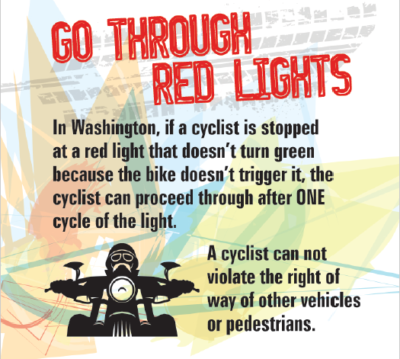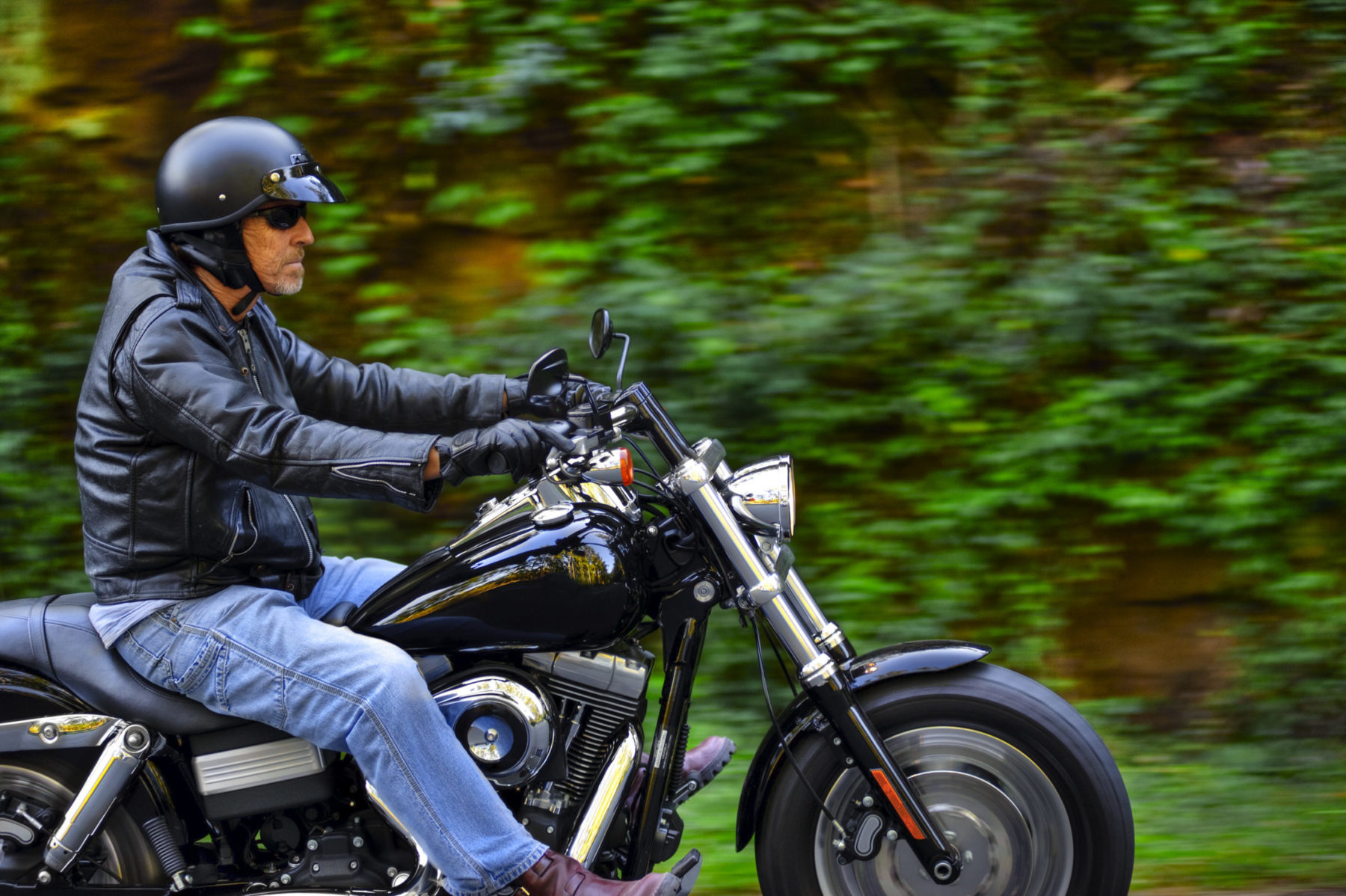It is important to follow these Washington state motorcycle laws to avoid getting hurt in an accident and to avoid getting a ticket!
1. Get a motorcycle license endorsement. All motorcycle riders are required to have a motorcycle endorsement on their driver’s license (RCW 46.20.500). There are two ways to obtain a Washington motorcycle endorsement. You can attend and graduate from an approved motorcycle training school or pass a written knowledge test and a riding test. Moped riders do not need an endorsement, just a valid driver’s license. To qualify as a moped, the bike must have an engine of 50cc or less and have a top speed of 30 mph or less (RCW 46.04.304). Note – you must have a Washington driver’s license before you can get a motorcycle endorsement.
2. Register your motorcycle. Before you can take your bike out on the road, you must register it with the Washington State Department of Licensing. Be sure to bring these items with you when you go to register your bike:
— Proof of Ownership
— Fill out an odometer disclosure statement
— Display a valid license plate
3. Red Light Law. In Washington, if a cyclist is stopped at a red light that doesn’t turn green because the motorcycle doesn’t trigger it, the cyclist can proceed through after one cycle of the light. A cyclist cannot violate the right of way of other vehicles or pedestrians (RCW 46.61.184).

4. Helmet Law. A helmet is required to be worn when operating a motorcycle, scooter or moped (RCW 46.37.530). Riding any two-wheeled vehicle with an engine triggers the helmet law. This is required on:— State highways
— City streets
— County roads
— Basically, all public roads – don’t try and find some loophole – wear a helmet!!
5. Check your bike gear. Be sure to check that your bike has the following safety features:
— A good muffler
— Left and right mirrors
— Windshield or face protections
— Handlebars less than 30” above saddle
— A horn that emits sound greater than 200 ft.
— Head and tail lamps
6. Rules of the road. Motorcycle riders must obey all the rules of the road, just like drivers. This includes traffic signals, yield signs, and instructions by the police.
7. Do a sound check on your bike. Washington Administrative Code (WAC) §173-62-030 prohibits excessively loud motorcycles. Your bike cannot exceed a sound level of over 78 dBA at speeds of 45 mph or less; and over 82 dBA for speeds over 45 mph.
8. Do not ride with more than two abreast. Washington laws prohibit riding more than two abreast. Riding solo or riding with two abreast is legal but riding three or more abreast is illegal. RCW 46.61.610 states “A person operating a motorcycle shall ride only upon the permanent and regular seat attached thereto, and such operator shall not carry any other person nor shall any other person ride on a motorcycle unless such motorcycle is designed to carry more than one person, in which event a passenger may ride upon the permanent and regular seat if designed for two persons, or upon another seat firmly attached to the motorcycle at the rear or side of the operator. However, the motorcycle must contain foot pegs or be equipped with an additional bucket seat and seat belt meeting standards prescribed under 49 C.F.R. Part 571 for each person such motorcycle is designed to carry”. RCW 46.61.612 states that no person shall ride a motorcycle in a position where both feet are place on the SAME side of the motorcycle.
9. Passing Stop-and-Go traffic. Riding in between lanes (lane splitting) is not allowed and is illegal. If you are in heavy stop-and-go traffic you cannot split lanes to pass the backed-up traffic (RCW 46.61.110 & 46.61.115). You also cannot ride on the shoulder of the road. RCW 46.61.608 states:
Operating motorcycles on roadways laned for traffic:
(1) All motorcycles are entitled to full use of a lane and no motor vehicle shall be driven in such a manner as to deprive any motorcycle of the full use of a lane. This subsection shall not apply to motorcycles operated two abreast in a single lane.
(2) The operator of a motorcycle shall not overtake and pass in the same lane occupied by the vehicle being overtaken. However, this subsection shall not apply when the operator of a motorcycle overtakes and passes a pedestrian or bicyclist while maintaining a safe passing distance of at least three feet.
(3) No person shall operate a motorcycle between lanes of traffic or between adjacent lines or rows of vehicles.
(4) Motorcycles shall not be operated more than two abreast in a single lane.
(5) Subsections (2) and (3) of this section shall not apply to police officers in the performance of their official duties.
10. Motorcycle insurance required. Starting July 27, 2019 motorcycles must carry $25,000 in bodily injury liability insurance, $50,000 bodily injury liability for two or more people, and $10,000 property damage liability insurance.
— It’s optional to buy Underinsured Motorist (UIM) coverage but it’s the most important insurance you need if you ride. Buy as much as you can afford!! We recommend at least 300,000 but 500,000 is better.
If you have questions about how motorcycle laws affect your ability to file an injury claim, call our motorcycle accident attorneys at MaxPower Law for your FREE consultation at 425-230-5732. Give us a call today!

